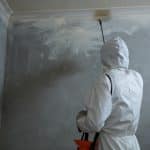When you think of potential hazards in your home, asbestos might not be the first thing that comes to mind. However, this hidden danger can lurk in older homes and buildings, posing serious health risks if disturbed. In this comprehensive guide, we’ll explore the importance of asbestos testing, the hidden dangers it can unveil in your home, and provide you with tips, real-life examples, and practical advice to keep your family safe.
The Hidden Threat: Understanding Asbestos
Before we dive into asbestos testing, it’s crucial to understand what asbestos is. Asbestos is a naturally occurring mineral that was widely used in construction materials, insulation, and more. Over time, asbestos-containing materials can deteriorate, releasing tiny asbestos fibers into the air, which can be harmful when inhaled.
The Health Risks of Asbestos Exposure
Exposure to asbestos is associated with severe health conditions, including lung cancer, asbestosis, and mesothelioma. The risks are real, making asbestos testing a critical step in ensuring your home is safe.
Why Asbestos Testing Matters
Asbestos is often hidden from view, making it impossible to detect without proper testing. Here’s why asbestos testing is necessary:
Identification: Testing helps identify asbestos-containing materials in your home.
Risk Assessment: It assesses the risk of exposure to asbestos fibers.
Safe Renovations: Testing is crucial before any renovation or demolition work to prevent the release of asbestos fibers.
The Silent Presence of Asbestos
Asbestos can be present in various building materials, such as insulation, flooring, roofing, and even popcorn ceilings. Your home might look perfectly safe, but asbestos could be hiding in plain sight.
DIY vs. Professional Testing
While DIY asbestos testing kits are available, it’s often recommended to hire professionals for accurate and safe testing. Certified asbestos inspectors know where and how to look for asbestos-containing materials.
Real-Life Example: A homeowner in Burnaby opted for a DIY asbestos test before starting a basement renovation. The results were inconclusive, leading to a delay in the project. When they hired a professional, asbestos-containing insulation was found, necessitating proper abatement.
Asbestos Testing Process
Professional asbestos testing involves:
Visual Inspection: Identifying potential asbestos-containing materials.
Sampling: Taking samples of suspected materials.
Laboratory Analysis: Testing samples in a certified lab for asbestos presence.
- When to Test for Asbestos
- Test for asbestos when:
- Buying an older home.
- Planning renovations or demolition.
- Suspecting damaged materials or water damage.
- Noticing deteriorating insulation or flooring.
Peace of Mind
Asbestos testing provides peace of mind. If your home tests negative, you can proceed with renovations or repairs confidently. If asbestos is found, you can take necessary precautions.
DIY Renovation Risks
If you’re planning a DIY renovation in an older home, proceed with caution. Disturbing asbestos-containing materials without testing can release dangerous fibers into the air.
Tip: Always test for asbestos before embarking on any DIY project that involves potential asbestos exposure.
Professional Asbestos Abatement
If asbestos is found in your home, hire professionals for safe asbestos abatement. They have the knowledge and equipment to remove asbestos safely.
Conclusion: Unveiling Hidden Dangers for a Safer Home
Asbestos may be a hidden danger, but asbestos testing is the key to unveiling and addressing this risk in your home. Your family’s health and safety should always come first. By testing for asbestos, you can identify potential hazards and take the necessary steps to mitigate them.
Whether you’re buying an older home, planning renovations, or simply want peace of mind, asbestos testing is a responsible choice. Remember, knowing is half the battle when it comes to keeping your home and loved ones safe from the hidden dangers of asbestos.








